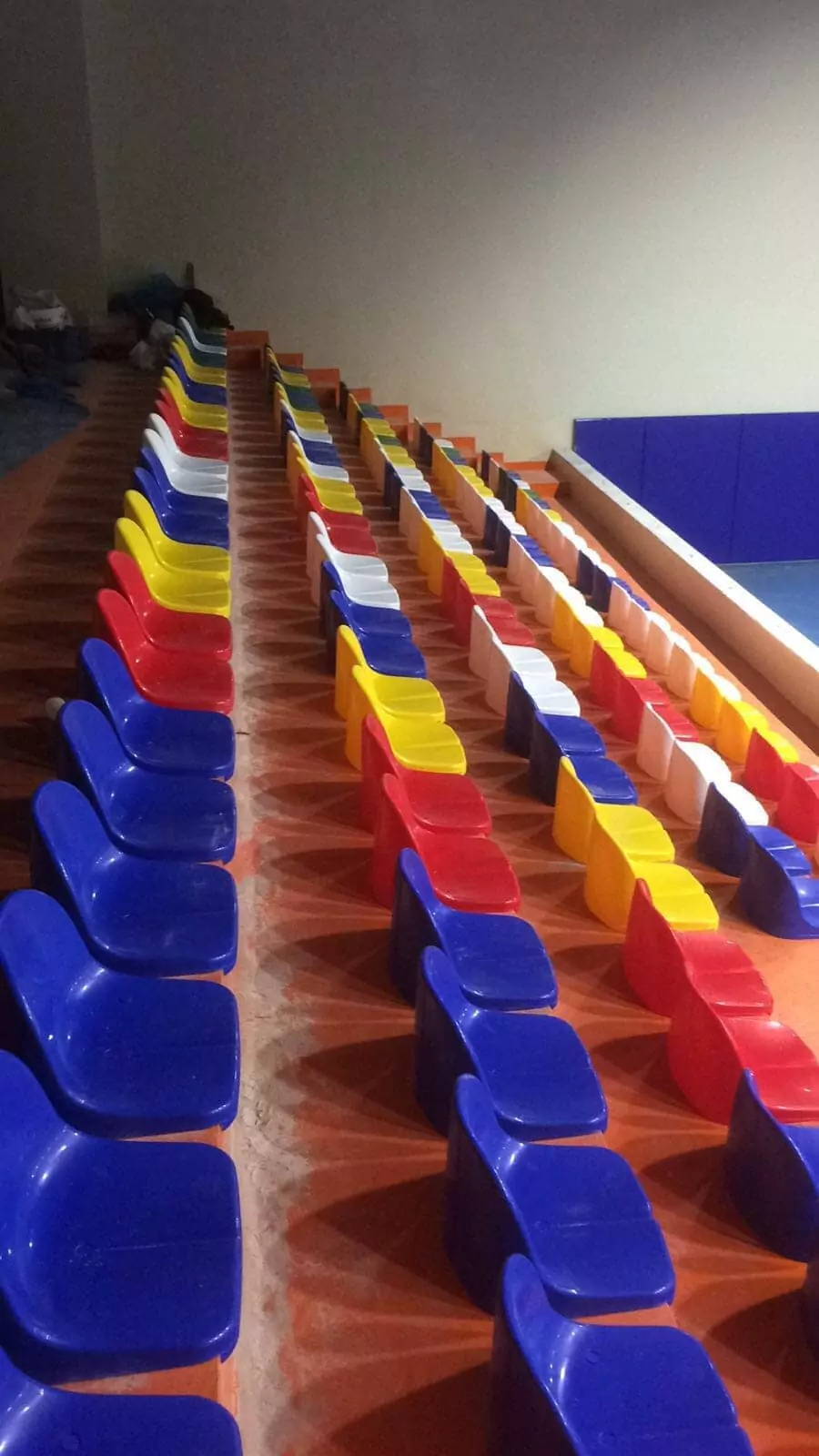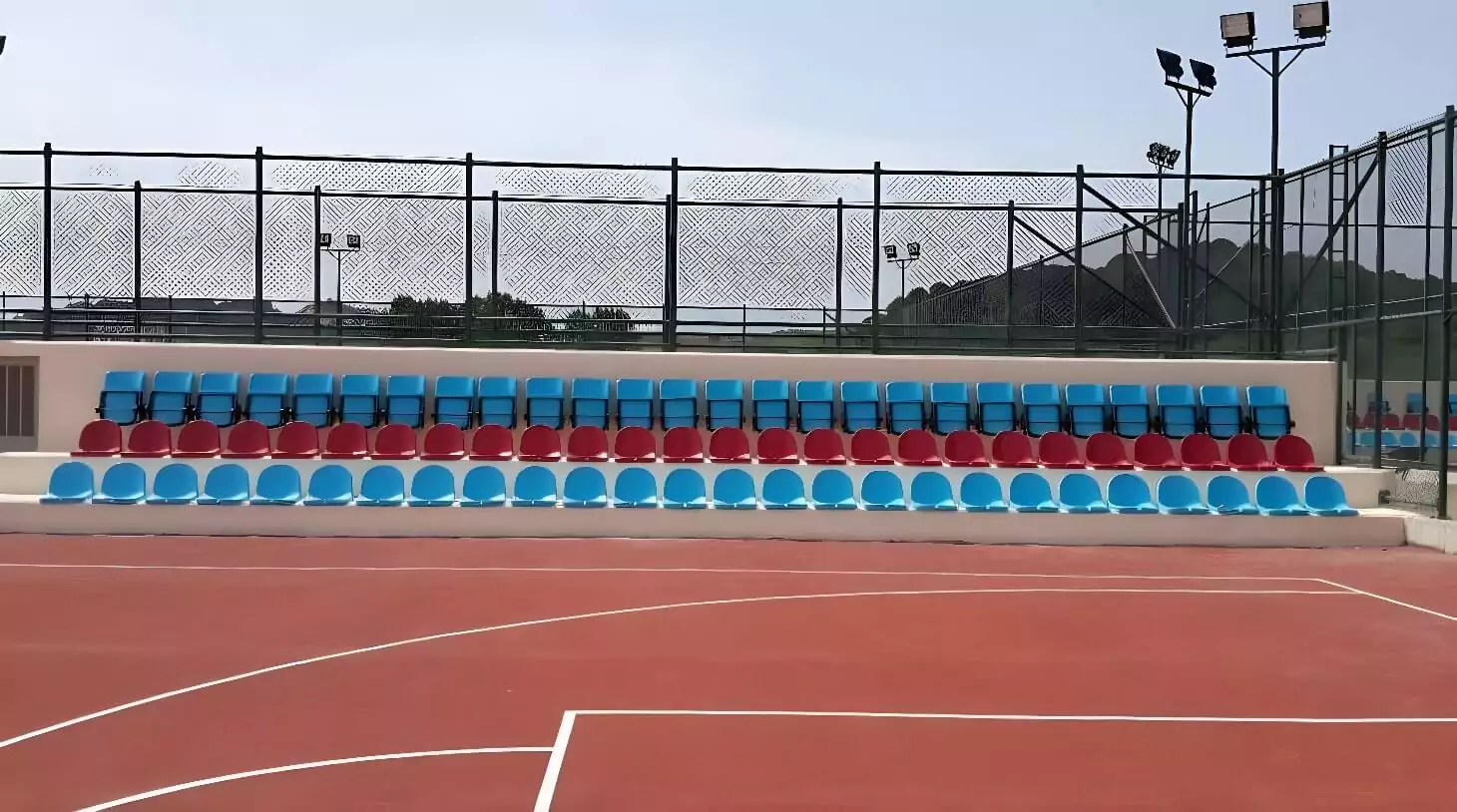Plastic Fixed Stadium Seats
Fixed Stadium Seats: Reliability, Safety, and Long-Term Investment for Modern Venues
In the design of modern sports and entertainment arenas, fixed stadium seats remain the backbone of seating infrastructure. While luxury boxes and modular systems attract attention, fixed seats deliver the durability, safety, and cost efficiency required for high-capacity stadiums worldwide. From football arenas in Europe to athletics venues in Africa and cricket stadiums in Asia, fixed seating solutions continue to dominate large-scale projects.

Why Fixed Stadium Seats Are Essential
Fixed stadium seats are permanently installed in rows, creating consistent layouts that maximize capacity and ensure safety. Their importance lies in:
Durability: Designed to withstand decades of use and heavy fan traffic.
Safety compliance: Meeting FIFA, UEFA, ISO, and EN standards.
Cost-effectiveness: Lower lifecycle costs compared to frequent replacements.
Stability: Fixed anchoring ensures resistance to crowd movements and vibrations.
For stadium operators, fixed seating represents a long-term investment that reduces operational risks.
Key Benefits of Fixed Stadium Seats
Longevity
Built from high-quality plastics, metals, and polymers, fixed seats resist wear and environmental damage.
Easy Maintenance
Modular parts allow damaged components to be replaced without removing entire rows.
Customization Options
Clubs and municipalities can integrate colors, logos, and sponsor branding directly into seat design.
Comfort Enhancements
Modern fixed seats are ergonomically designed, balancing durability with spectator comfort.
Applications of Fixed Stadium Seating
Football Stadiums: High-capacity venues such as those in Turkey, Germany, and the UK rely on fixed seating for consistency and safety.
Cricket Grounds: Large stadiums in India, Australia, and South Africa adopt fixed chairs to host tens of thousands of fans.
Athletics Venues: Olympic-style stadiums depend on fixed seats for international compliance.
Community Arenas: Municipal projects benefit from cost-effective and durable installations.
Fixed Seating and Price-Performance Balance
Fixed seats are popular because they balance affordability and long-term value:
Lower replacement frequency reduces costs over decades.
Scalable installations fit both 10,000-seat arenas and 80,000-seat mega-stadiums.
Compliance ensures eligibility for hosting international tournaments.
Case Studies: Fixed Stadium Seats in Action
Wembley Stadium (UK): Iconic fixed seating layout for over 90,000 fans.
Narendra Modi Stadium (India): The world’s largest cricket stadium, relying on fixed seats for safety and durability.
Atatürk Olympic Stadium (Turkey): Renovations continue to focus on reliable, long-lasting fixed seating systems.
The Future of Fixed Stadium Seats
Even as modular and smart seating grows, fixed stadium seats will remain dominant due to:
Proven reliability in high-capacity venues.
Integration of sustainable materials for eco-friendly design.
Improved ergonomics for enhanced spectator experience.
Hybrid solutions blending fixed seating with technology upgrades.

Conclusion
The role of fixed stadium seats in global sports infrastructure cannot be overstated. They provide the reliability, durability, and affordability that large venues require, ensuring safety and comfort for millions of fans worldwide. As the industry continues to evolve, fixed stadium seating will remain the foundation of modern stadium design—delivering value for both spectators and operators over the long term.

